(Trans-Duodenal):
•Remove cbd stones by instrumentation (Randall stones forceps, scoops of several types and sizes, irrigation catheter, biliary Fogarty catheter) or extrinsic pressure by milking the stones to the upward #choledochotomy (Figs. 14.30and 14.31).
•Demonstrate ampullary patency using a small French catheter. If doubt about patency remains, use a Bakes No. 3 dilator very carefully to avoid false passage. Choledochoscopy may be helpful. Conduct repeated irrigation of the biliary ducts to remove small stones or sludge. If stones are impacted in the ampulla, papillotomy for their removal will be necessary. (Figs.14.32,14.34, and 14.35).
•Carry out duodenal kocherization. Insert balloon catheter all the way down through the ampulla. Place stay sutures of 4–0 silk at the duodenal wall in the area of the palpable balloon. •Perform duodenotomy using electrocautery Perform a sphincterotomy between the 10 and 11 o’clock positions to a depth of 2–3 mm using electrocautery (Fig. 14.41).
• Approximate the ductal and duodenal mucosa with interrupted 5–0 synthetic absorbable sutures (Figs. 14.41 and 14.42). Execute duodenorrhaphy in two layers. Place a T-tube into the common bile duct and insert a Jackson-Pratt drain.
“?????-???????? ??????????? ?? ???????????????? ??? #??????????????????? ?? ??? ???? ????????? ?? ??? ?? ????”
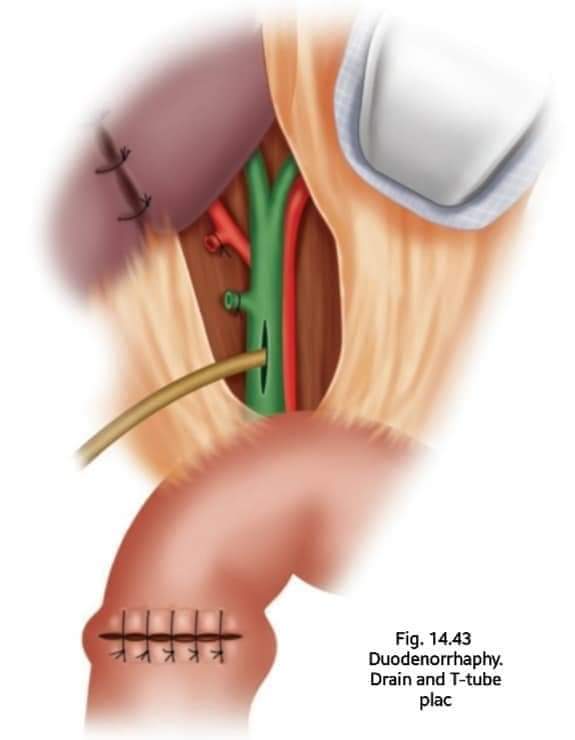
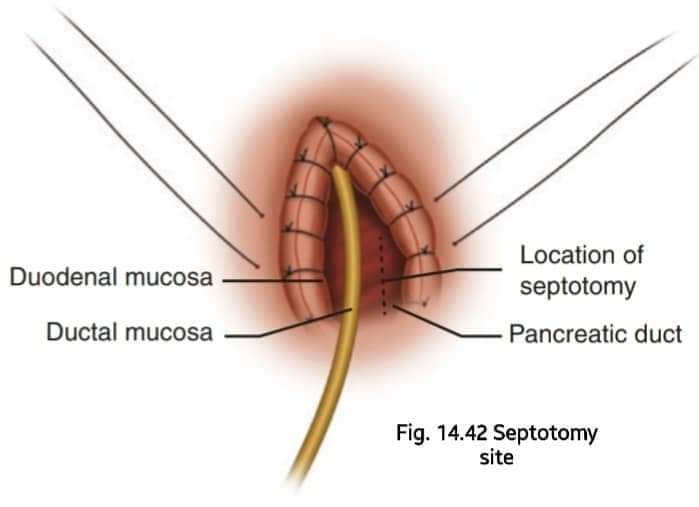
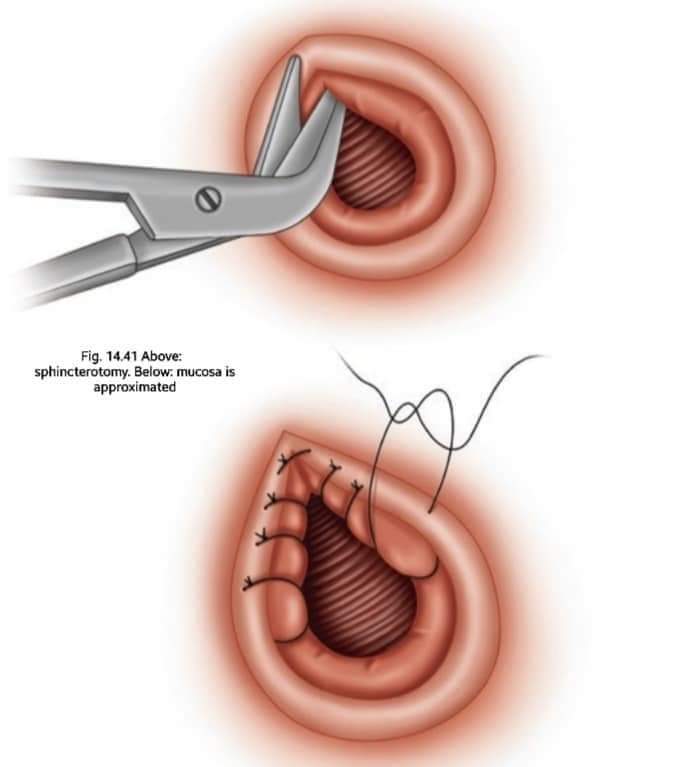
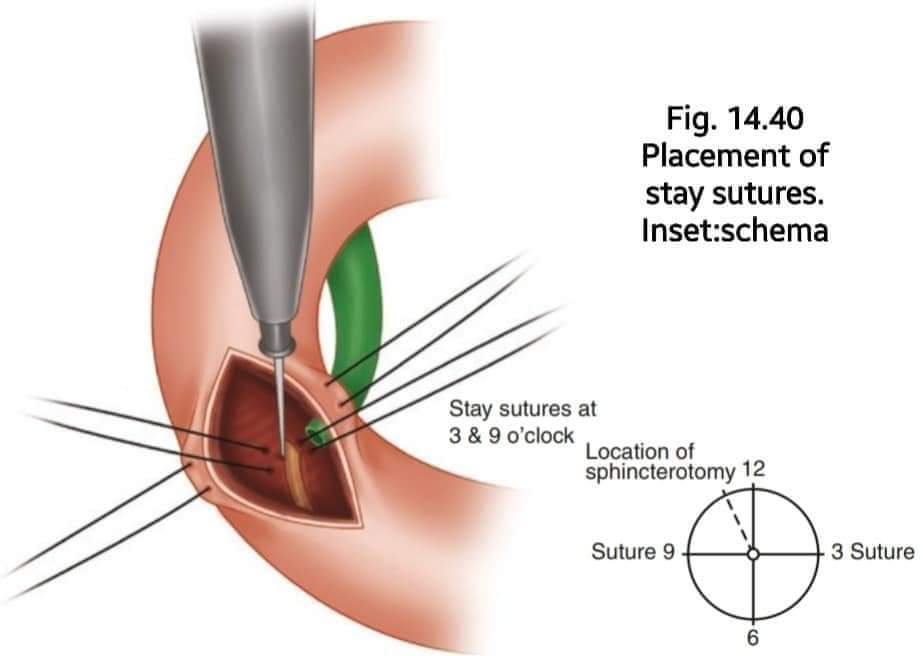
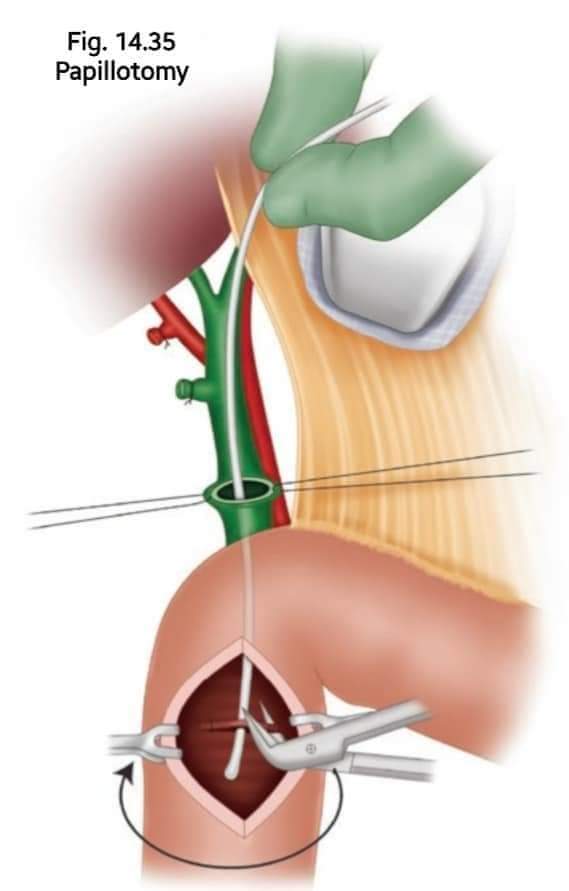
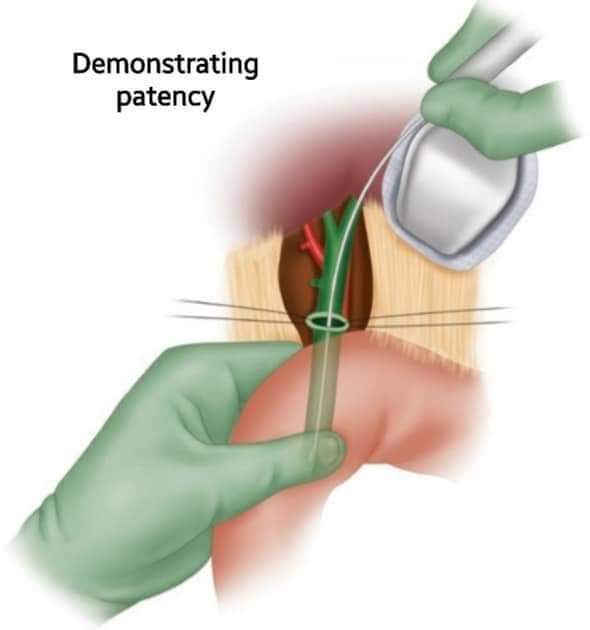
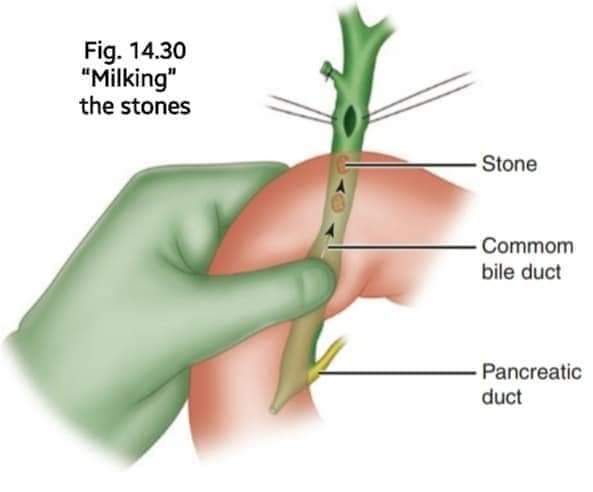
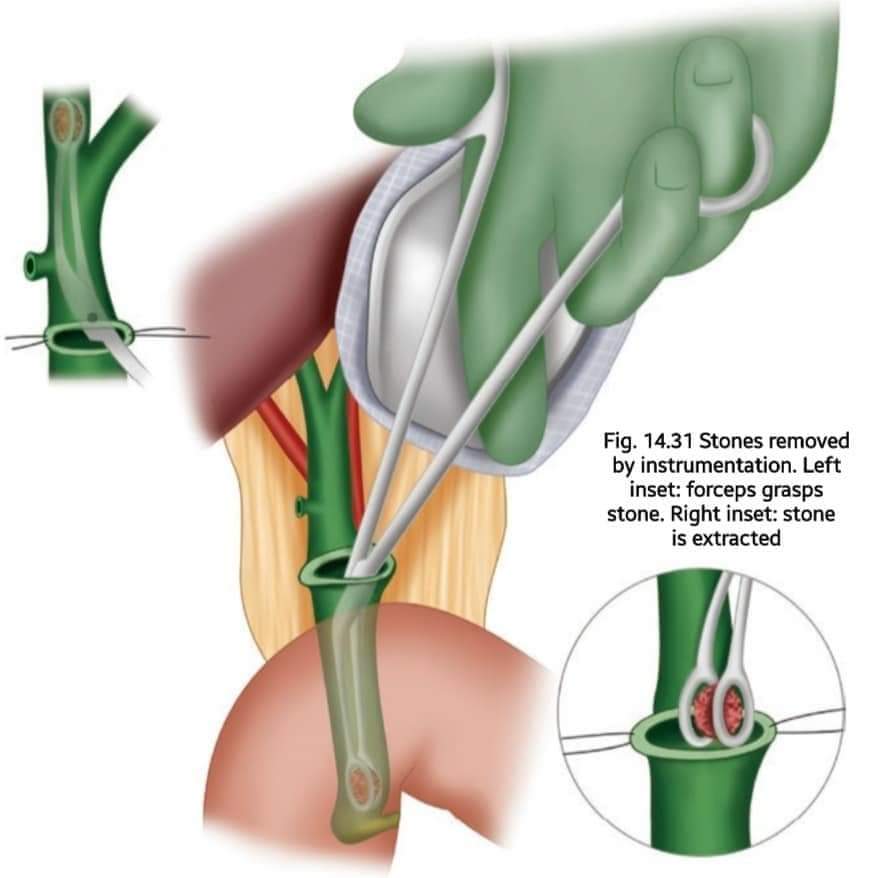
???: Surgical Anatomy and technique 5th ed 2021.
